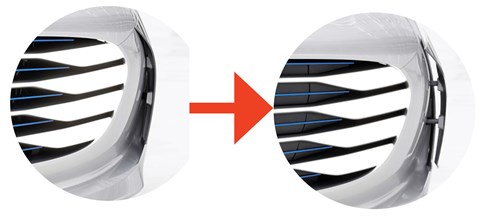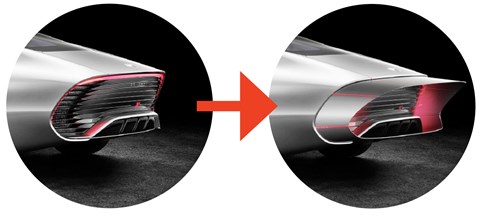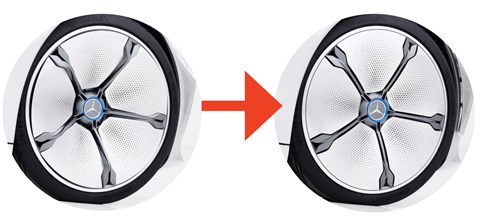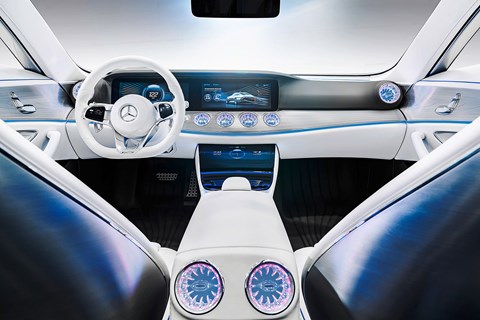► Inside Merc’s streamlined concept
► Shape-shifter, Merc’s body changes
► We bring you the lowdown
The Mercedes-Benz Concept IAA was one of the stars of the Frankfurt show. Standing for
Intelligent Aerodynamic Automobile, the concept’s sleek bodywork echoes the streamlined W125 driven to an autobahn-storming 268mph by Rudolf Caracciola in 1938.
Radical active aerodynamics – bodywork that extends by 390mm at speed, shape-shifting wheels – combine with a plug-in powertrain for efficiency that’d have VW execs desperately plugging their laptops into onboard diagnostics.
The result is a car that improves from an already slick 0.25Cd to an incredible 0.19Cd with all aero tricks deployed, and emits a claimed 28g/km CO2.
Mercedes’ aerodynamics expert Martin Konermann explains how it all works.

1) Wind-cheating front vents
Flaps behind the front grille close when cooling requirements reduce at speed, and the splitter also retracts by 60mm to increase under-body airflow. Either side of the front bumper, active gills help quell turbulence around the front wheelarches.

2) The extending derriere
Looking like a robot armadillo, the IAA’s rear electro-mechanically extends by 390mm above 50mph. The eight-piece arse is made from carbonfibre; strong enough to withstand the airflow, so light that the driver perceives no shift in weight distribution.

3) Clever colanders
At low speeds the 22-inch wheels – with slim 235-section tyres – are dished to a depth of 55mm, and feature an opening around their perimeter for brake cooling. The dish shrinks as centrifugal forces build; at 50mph it’s flat, and the cooling slat sealed shut.
4) Petrol/electric fuel-sipper
A plug-in petrol/electric drivetrain powers Concept IAA. Lifted from the existing C350e production car, the 2.0-litre turbocharged four-cylinder engine produces 208bhp, or 279bhp in tandem with the electric motor. Mercedes quotes an all-electric range of 40 miles, and 28g/km CO2 on the combined cycle with all the aero toys active. But because the IAA Concept cruises through half of the EU combined cycle on electric power alone, the aero represents only a 3g/km saving under lab conditions. Aero expert Martin Konermann, however, claims a 20g/km CO2 real-world reduction at 87mph.

5) E-class interior preview
The IAA’s cockpit hints at what ‘the interior of a business saloon might look like in the near future’ – cunning code for ‘it’s the next E-class’. The four-seat cabin evolves today’s S-class approach, and features contrasting anthracite and white leather trim, aluminium and cut glass, and iPad-esque instruments. The steering wheel includes touch-based Optical Finger Navigation; imagine an iPod wheel and adjacent back button. Connected tech allows the IAA to avoid accidents by communicating with other cars.